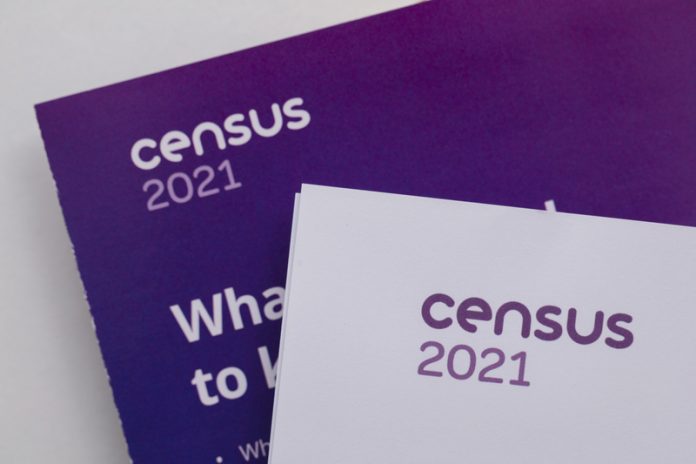Adam Mayer, Senior Manager at Qlik, discusses why the 2021 Census will underpin better policy decisions to address the post-COVID economy
The UK Census, run by the Office for National Statistics (ONS), is a once-in-a-decade nationwide survey that allows the government to take a snapshot of the national population as it stands on 21st March 2021. Every UK household was legally required to complete the survey (by 21st March) recording its inhabitants, with the data used to inform critical policy decisions, from the number of police officers allocated to a particular city, to the schools, hospitals, doctors surgeries and libraries planned for a local area.
Over the past year, we have seen the critical role that data plays in government decision-making. The public is much more well-versed in understanding how data directly impacts our lived experience. As such, many will be more engaged with this Census and will understand the importance of equipping our officials with the most relevant, recent and accurate insights.
Accurate data is vital in a COVID world
The last Census was completed in 2011, meaning the current national population statistics published in the UK are based on figures from ten years ago. As a result, historic population data is impacting all national snapshots, from the information shared in COVID-19 briefings, to wider planning meetings by health and social care departments.
Amid the most drastic societal and economic changes in recent history, updating these figures is essential. As we emerge from the pandemic, obtaining a clear and complete snapshot of the population to effectively understand its impact will be critical in informing the government’s response, particularly around funding and resource distribution given the £4.8bn Levelling Up fund that will aim to regenerate areas across the UK. Having an accurate picture of the population against cases of COVID-19 following the vaccine rollout will be key in helping the government understand and responsibly address the longer-term fallouts to mitigate the damage brought about by the pandemic.
So, with the data from this year’s Census arguably more important than ever, what is ONS doing to ensuring that it is able to attain a complete and accurate understanding of the population?
Going digital to drive uptake
It is critical that the Census delivers data that encompasses the entire nation so the government has the best possible insights to inform the policy decisions that will be taken over the next decade. If data from particular social groups is missing, an inaccurate picture of the UK population will be presented, which could lead to resources for local services being unevenly distributed. To avoid unintended negative outcomes, driving uptake of the survey is a priority for the ONS.
This year, to encourage mass uptake and ensure as many people as possible respond, the Census is going digital for the first time. This change reflects the government’s commitment to digitisation, particularly its appreciation for the increasing role of data, following commitments in the 2020 National Data Strategy to establish an approach that reflects the opportunities and challenges of our hyper-digital world. Going digital is not only expected to increase the number of responses to the Census, but it will also remove some of the challenges of having to get it done on a single day with paper copies. In turn, it will also increase the accuracy of the data. The digital survey minimises the risk of human error when data is manually inputted, while also empowering them to process the data faster. This will empower policy makers to start making use of this up-to-date data quicker, ensuring that critical decisions around the post-COVID economy are based on an accurate understanding of the population.
Whose data is missing?
However, while this strategy is certainly a positive step towards encouraging more Census responses, digital alone is not a silver bullet for reaching every individual.
When it comes to collecting population data, the people who are most hard to reach or who do not respond to a survey are often more likely to be vulnerable and present a cause for concern. It’s imperative that the data collected is as representative of the nation as possible. If not, the incomplete data will limit the government’s understanding of the lived experience of certain groups in society.
To reach vulnerable groups, community management teams at the ONS have investigated and analysed which groups are unlikely to complete the Census, connecting with local councils and community services to identify approaches that will support individuals in responding. For example, ONS teams work with homeless shelters in local areas to support individuals to register and complete their Census on the day, using a shelter known to them as their fixed abode. Ensuring those without digital access have a local, accessible location to complete their Census form is also a priority. It is also important to consider language barriers in the data collection process, a challenge that ONS are trying to overcome by making paper copies of the survey available in multiple languages to ensure no one is excluded based on their ability to read and speak English.
Putting accurate data in the hands of policy makers
The accuracy and comprehensiveness of the Census is critical to drive informed, accurate policy decision-making into the future. This Census could not come at a more perfect time when a snapshot of the nation is desperately needed to ensure that the measures taken to address the impact of COVID-19 are based on the most up to date and accurate data. With the general population more engaged with data than ever before, the ONS has a great opportunity to bring the Census process into the 21st century and help our policy makers better serve the nation.
Note: Scotland’s next census will be held in March 2022











